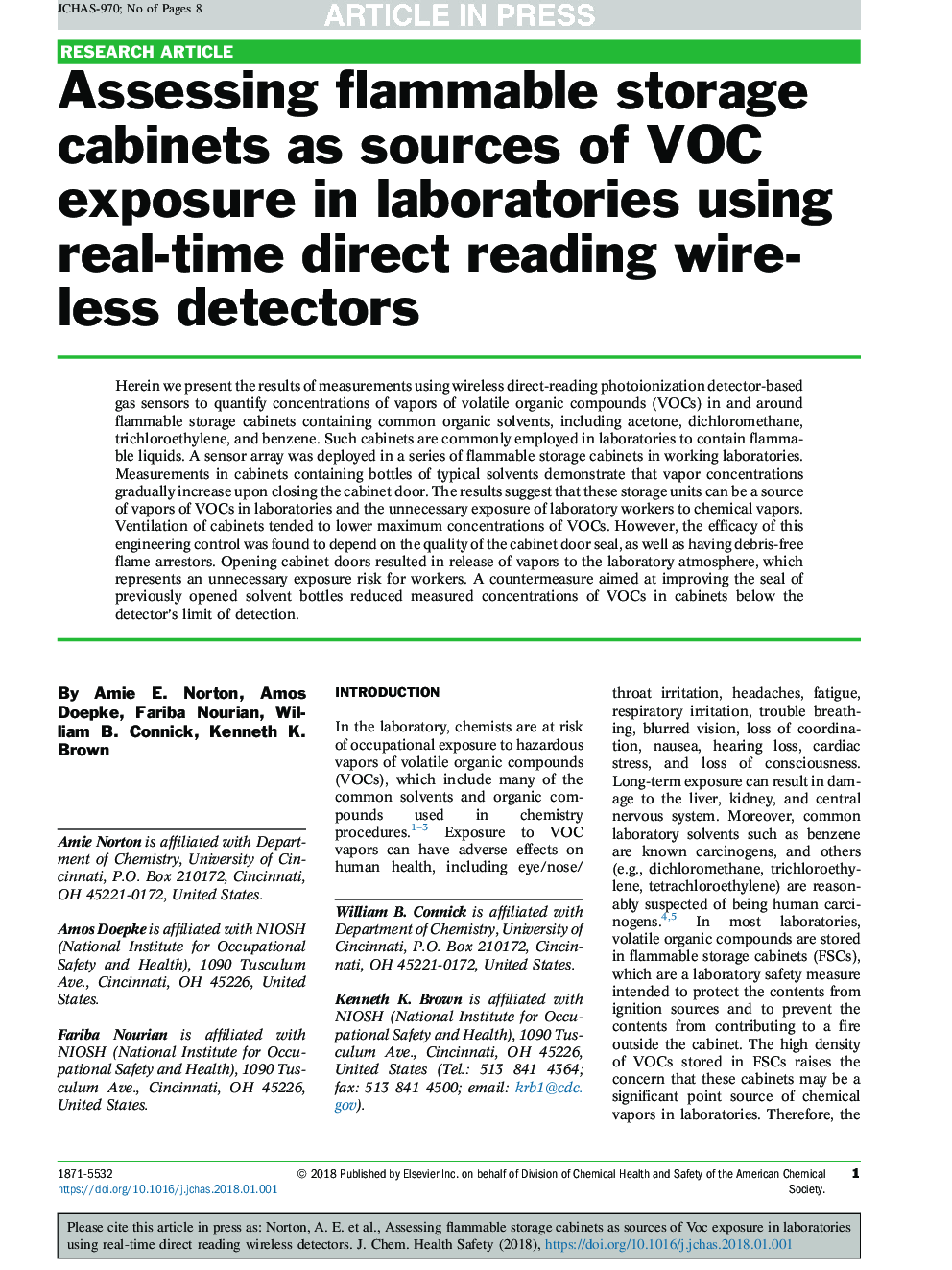| Article ID | Journal | Published Year | Pages | File Type |
|---|---|---|---|---|
| 10151570 | Journal of Chemical Health and Safety | 2018 | 8 Pages |
Abstract
Herein we present the results of measurements using wireless direct-reading photoionization detector-based gas sensors to quantify concentrations of vapors of volatile organic compounds (VOCs) in and around flammable storage cabinets containing common organic solvents, including acetone, dichloromethane, trichloroethylene, and benzene. Such cabinets are commonly employed in laboratories to contain flammable liquids. A sensor array was deployed in a series of flammable storage cabinets in working laboratories. Measurements in cabinets containing bottles of typical solvents demonstrate that vapor concentrations gradually increase upon closing the cabinet door. The results suggest that these storage units can be a source of vapors of VOCs in laboratories and the unnecessary exposure of laboratory workers to chemical vapors. Ventilation of cabinets tended to lower maximum concentrations of VOCs. However, the efficacy of this engineering control was found to depend on the quality of the cabinet door seal, as well as having debris-free flame arrestors. Opening cabinet doors resulted in release of vapors to the laboratory atmosphere, which represents an unnecessary exposure risk for workers. A countermeasure aimed at improving the seal of previously opened solvent bottles reduced measured concentrations of VOCs in cabinets below the detector's limit of detection.
Related Topics
Physical Sciences and Engineering
Chemical Engineering
Chemical Health and Safety
Authors
Amie E. Norton, Amos Doepke, Fariba Nourian, William B. Connick, Kenneth K. Brown,
